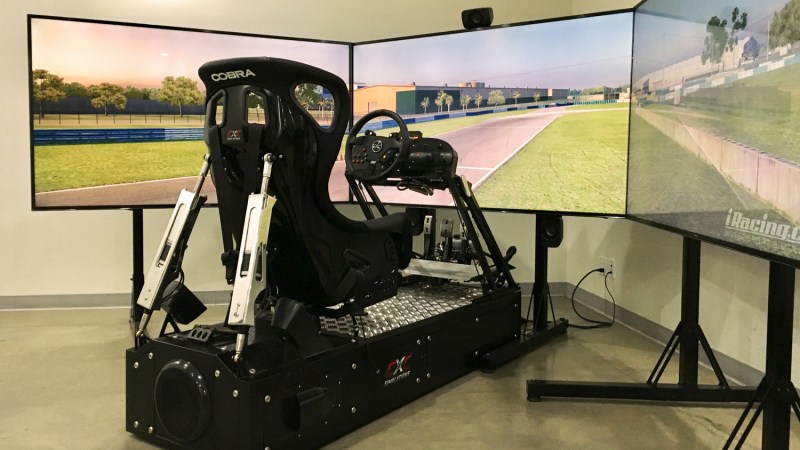
At a certain point, the adult version of our self decides to indulge — to reward years of hard work with a contemporary treat. For those of us with oil pumping through our veins, the dream of owning a race car is sovereign. “Sure,” you think, “I can’t buy a Lamborghini to race in Super Trofeo, but I can afford a $15,000 Spec Miata.”
Unfortunately, racing isn’t a one-time expense. Consumables like brakes and tires can total thousands of dollars over the course of a racing season. You’ll also need a truck and trailer to haul your race car to and from each event. If you’re a novice, there’s a chance you’ll bin the car at some point; how does $5-10K in repairs sound? Oh, and if you want to drive something with more than 100 horsepower, like, for example, a Porsche Cayman GT4, prepare to shell out $190 grand for a used model and $400-500K per IMSA GT3 race season.
Now that I’ve sufficiently crushed your racing aspirations, may I suggest a different strategy?
If you call yourself a surface dweller, there’s a good chance you’ve heard the term “racing simulator.” In fact, you may have even tried one for yourself – perhaps a friend has a Logitech G-Force wheel and a copy of Project CARS hooked up to his Xbox. You probably have a good time flinging a production sports car around a famous racetrack, chuckling when you make a mistake and plow into a wall at 120 miles per hour. Who cares — it’s a game; it’s also nothing like a CXC Simulation.
There’s another way to describe a racing simulator. At CXC Simulations in El Segundo, California, a racing simulator is an intricate combination of motion, vibration, audio, and software systems to recreate genuine racing experiences.
In the words of CXC founder Chris Considine, “Comparing a force feedback wheel and pedal set, or really any other off-the-shelf simulator kit, to a CXC system is like comparing a Ford to a Ferrari.” Mass-production systems meet the minimum viable requirements of gamers, but a bespoke setup from CXC is built for the demands of real racing drivers – CXC’s core clientele. You read that correctly: some of the world’s finest racing teams and drivers use CXC Simulators to maintain and sharpen their skills.
To find out how the best driving simulation compares to real racing, we went hands on with CXC’s Motion Pro II unit at the company’s headquarters.
When you strap into a CXC chassis, slide into its bucket seat, secure a five-point harness, grip a Momo steering wheel, toy with hydraulic brake, throttle, and clutch pedals, and flip the wheel-mounted carbon fiber paddles, any notion you’ve had of a racing simulator until now becomes laughable. And that’s before you even hit the virtual track.
Our first test uses iRacing software to stage a Radical SR3 racecar on Sebring Raceway’s Club track. This particular CXC rig uses a Cobra full-containment racing seat and three 75-inch high-definition screens to recreate the cockpit. As we take our warm-up laps, the first thing we notice is the lack of friction from cold tires. The operative word here is “notice,” because with a standard force feedback wheel, cold tires are simply something you register in the back of your mind, but the linear vibration motors in a Motion Pro II system let you feel the subtleties of traction.
As momentum builds, so does the realism. G-force (via the direct drive steering wheel and seat motion) tricks our brain into believing we’re taking a corner at 110 mph or locking up the tires under hard braking. The lightweight CXC unit suffers zero delay in communicating the car’s unsettled chassis. With each lap, we lose more of ourselves to the experience.
After what feels like 5 minutes but is really 30, Chris chimes in, “Ready to try VR?” Massive HD monitors are a great way to experience a racing sim, but virtual reality is the ultimate in immersion. As we secure our Oculus Rift headset, the Radical SR3 cockpit comes alive. Our initial laps introduce the same haptic feedback as before, but the sensation of speed is very different. We find ourselves taking corners slower and getting on the brakes earlier than before. We’re well acquainted with the track by now, yet the visceral nature of VR, combined with the accuracy of the CXC rig, amplifies the consequence of our actions. Getting on the throttle too early, or understeering onto the grass seems like a life-threatening error.
After the trepidation subsides, however, things get really good. We’re hitting apexes more consistently, shifting more perfectly, and finding tenths of a second where we never thought to look for them. This is real racing.
After 30 minutes in virtual bliss, we emerge — sweating, heart racing, and grinning from ear to ear. Our concept of simulated racing has changed forever, and now we have some advice for you.
If you aspire to race, nothing is more valuable than practice. Even if you’re blessed with abundant time, the cost of real-world experience is tremendous. If you’ve done the math and don’t like the results, change the equation. A CXC simulator builds muscle memory and driving skill that directly translates into talent behind the wheel.
It’s the ultimate big kid toy, for the most dedicated adults.
Editors' Recommendations
- Bugatti Bolide: A track-only hypercar for drivers with no racing experience
- You can now join the wait list for the Range Rover Electric, and here’s why you may want to
- Drive Into 2021 With Vanderhall’s 2020 Carmel GT Race-Ready, 3-Wheel Go-Kart
- Manned Flying Car Races Are Coming in 2022


